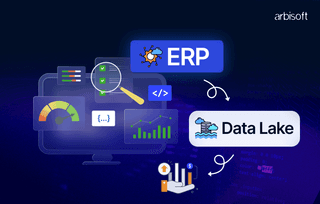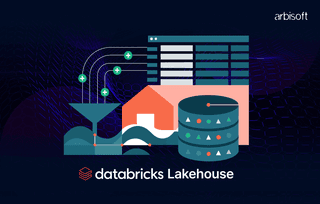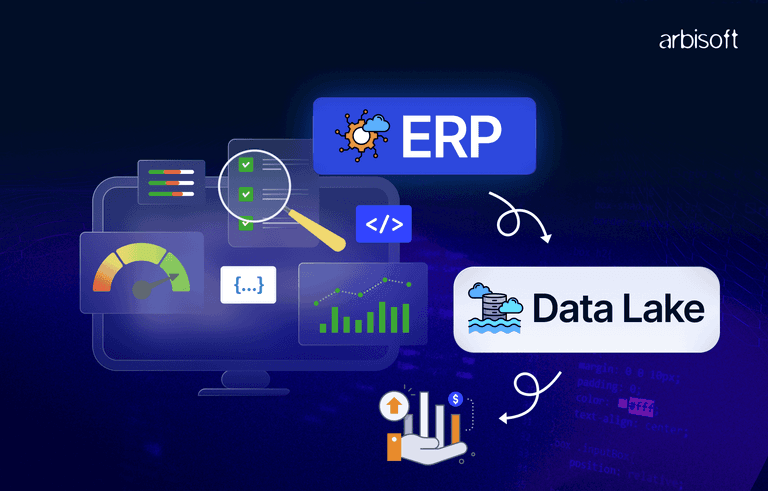We put excellence, value and quality above all - and it shows




A Technology Partnership That Goes Beyond Code

“Arbisoft has been my most trusted technology partner for now over 15 years. Arbisoft has very unique methods of recruiting and training, and the results demonstrate that. They have great teams, great positive attitudes and great communication.”
Evaluating Meta's New Open-Source AI Model: Llama 3.1

Meta's release of Llama 3.1 marks a significant leap in open-source large language models (LLMs). This series of open-source LLMs, particularly the groundbreaking 405B parameter model, redefines the boundaries of what's possible in the open-source AI domain. Llama 3.1 is poised to disrupt the LLM environment, showcasing the impact of LLMs and empowering a new generation of innovators by offering unparalleled capabilities, cost-effectiveness, and a commitment to responsible development.
This blog post dives deep into Llama 3.1's capabilities, explores its advantages over closed models, and discusses its potential impact on the future of AI.
But first …
What is Llama 3.1?
Llama 3.1 is a series of open-source LLMs, with the flagship model being the 405B parameter version. Llama 3.1 boasts a staggering number of parameters that define its complexity and capabilities. This immense size positions it as the first frontier-level open-source LLM, competing directly with the most advanced closed-source models like GPT-4 from OpenAI.
But Llama 3.1 offers more than just size. It includes two additional models: a 70B parameter model and an 8B parameter model. This range of options allows users to choose the model that best suits their computational resources and specific tasks. All models are built on the Transformer architecture, a prevalent deep learning technique for natural language processing (NLP).
Notably, Llama 3.1 boasts an expanded context length of 128,000 tokens. This allows the model to analyze and understand longer text sequences, leading to more comprehensive and nuanced outputs. Additionally, the 405B model incorporates instruction tuning, a technique that fine-tunes the model on specific tasks and improves its performance on those tasks compared to pre-trained models.
Key Features and Advantages
Llama 3.1, particularly the 405B model, signifies a paradigm shift for open-source LLMs. Here's a breakdown of its key features and the resulting advantages it offers.
- Benchmarks across various tasks like question answering, code generation, and text summarization demonstrate performance rivaling leading closed-source models. This includes established benchmarks like SuperGLUE and LAMBADA, ensuring a robust comparison.
- The 405B model boasts an unprecedented reasoning capability, allowing it to tackle complex queries and generate more informative responses. This is achieved through advancements in its internal architecture, such as the use of hierarchical attention mechanisms in language models that enable the model to focus on relevant sections of the input text for a more comprehensive understanding.
- Running Llama 3.1 on your infrastructure can be up to 50% cheaper compared to closed-source alternatives. This is due to eliminating licensing fees and the flexibility to choose your preferred hardware. However, the cost savings are particularly significant for larger models (405B). For the smaller models (70B and 8B), the cost advantage might be less pronounced, but the open-source nature still offers benefits in terms of customization and control.
The Power of Open Source
- Customization - Unlike many closed models, Llama 3.1 allows you to tailor it to your specific needs. This can involve fine-tuning the model on your own data or modifying its architecture for specialized tasks. This level of control is particularly valuable for research and development efforts.
- Control Over Data and Deployment - The open-source nature grants you complete control over your data and deployment process. You decide how and where the model is used, reducing reliance on third-party vendors and potential limitations imposed by closed-source models.
- Enhanced Security & Transparency - Transparency fosters a collaborative environment where vulnerabilities can be identified and addressed quickly by the community. This proactive approach to security is crucial for responsible AI development.
The Technical Aspects
- Llama 3.1 offers multiple models, including 405B, 70B, and 8B, catering to various needs and hardware resources.
- The 128,000 token context window allows for a more comprehensive analysis of information.
- Llama 3.1 incorporates safety tools like Llama Guard 3 and Prompt Guard to mitigate potential risks associated with AI outputs, demonstrating the power of advanced deep learning solutions in building robust and reliable AI systems.
Meta's commitment to open-source extends beyond the model itself. Collaboration with companies like Databricks and Nvidia ensures support for developers in fine-tuning and deploying Llama 3.1. Additionally, broad availability across major cloud platforms (AWS, Azure, Google, and Oracle) empowers users with flexibility.
Head-to-Head with Other Models
While established players like ChatGPT 4o and Claude Sonnet 3.5 hold considerable weight in the LLM arena, Meta's Llama 3.1 disrupts the landscape with its unique combination of open-source accessibility and competitive performance. Here's a breakdown of the key points of differentiation.
Open-Source vs. Closed-Source
- Llama 3.1 - Open-source philosophy empowers users with complete control over the model, data, and deployment. This fosters customization, transparency, and a collaborative security approach.
- ChatGPT 4o & Claude Sonnet 3.5 - Closed-source models limit user control and customization. Security updates rely solely on vendor efforts, potentially leading to slower vulnerability patching.
Performance
- Llama 3.1 (405B) - Benchmarks indicate performance on par with leading closed-source models in tasks like question answering, code generation, and text summarization. Its focus on reasoning capabilities allows for tackling complex queries and generating informative responses.
- ChatGPT 4o & Claude Sonnet 3.5 - Limited independent benchmarks exist, making a direct comparison challenging. However, both models boast exceptional capabilities, with Claude Sonnet 3.5 excelling in creative text formats like poems and code, while ChatGPT 4o might have an edge in factual question answering.
Technical Details
- Llama 3.1 - Utilizes the Transformer architecture focusing on hierarchical attention mechanisms for improved reasoning. Offers an expanded context window of 128,000 tokens for comprehensive analysis.
- ChatGPT 4o & Claude Sonnet 3.5 - Specific technical details are not publicly available due to their closed-source nature. However, both are likely based on Transformer architecture variations with proprietary optimizations.
Cost
- Llama 3.1 - Running on your own infrastructure can be significantly cheaper (up to 50%) compared to closed-source models due to the elimination of licensing fees.
- ChatGPT 4o & Claude Sonnet 3.5 - Typically require licensing fees or access through cloud-based platforms, leading to potentially higher costs.
Challenges and Considerations
While Llama 3.1 offers groundbreaking capabilities, its deployment presents significant challenges that require careful consideration.
- Training a massive model like Llama 3.1 405B incurs significant costs. This might limit its accessibility for smaller organizations.
- Running the larger models requires substantial hardware resources. Exploring cloud options or utilizing the smaller versions (70B and 8B) can address this.
A Catalyst for AI Innovation
Llama 3.1 signifies a major milestone in open-source AI, opening doors for transformative applications across industries – including retail, where advanced ecommerce chatbot solutions powered by these cutting-edge models can revolutionize customer engagement. Its exceptional capabilities, cost-effectiveness, and focus on safety empower developers and businesses to build innovative applications. While challenges exist, the open-source approach fosters collaboration and fuels rapid development in the LLM landscape. As adoption grows, we can expect exciting advancements across various industries, with the potential to make a real difference in the world.
























